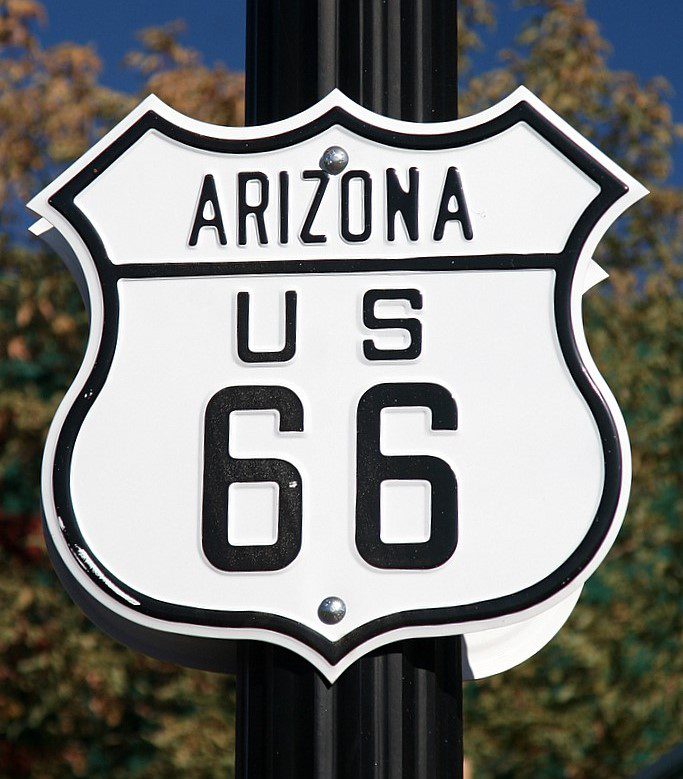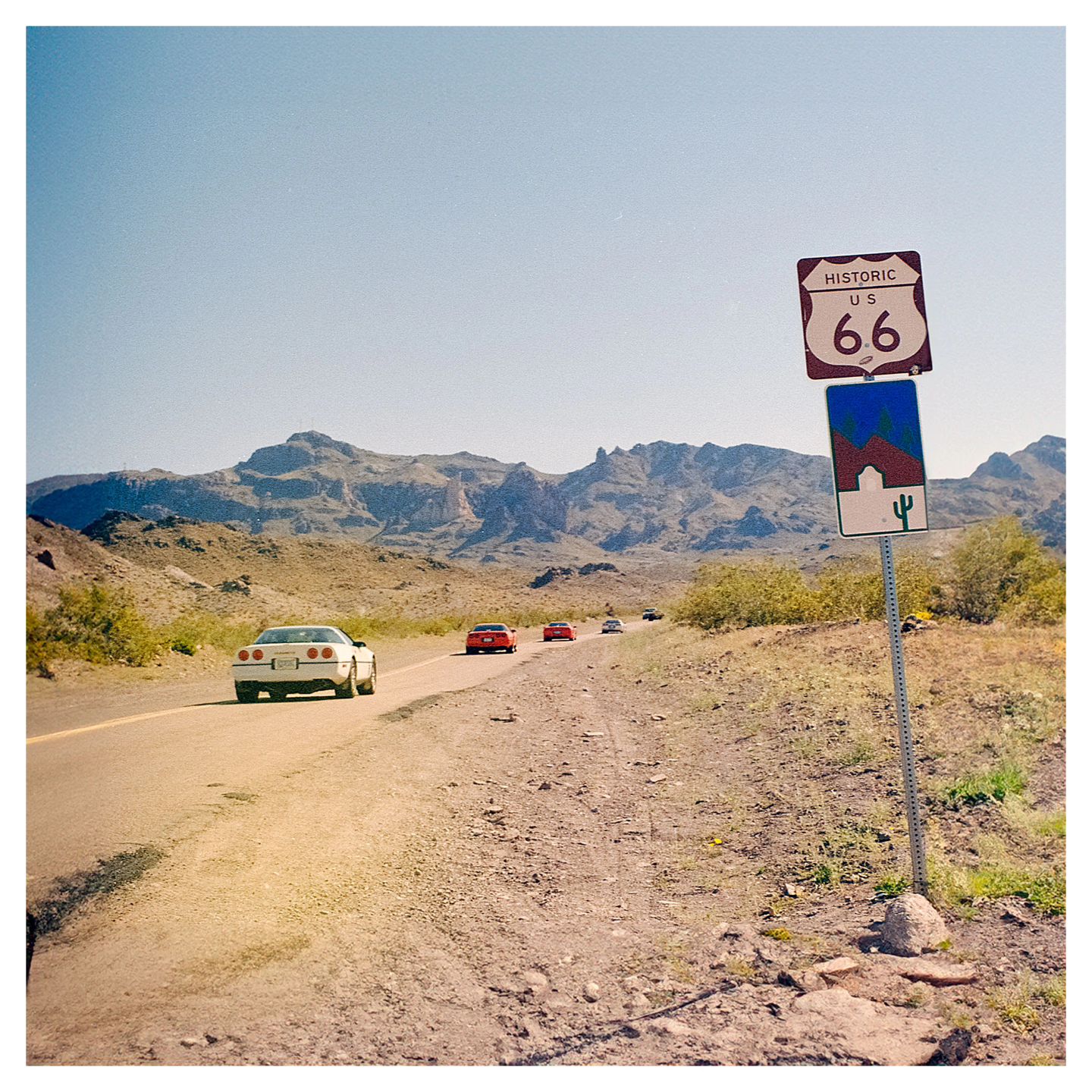The Route 66 sign is an American cultural icon that has been celebrated in literature, film, music, and art. This distinctive sign, featuring the letters “Route 66” and an image of a shield, has come to symbolize the freedom and adventure of the open road. From its beginnings in the 1920s to its current status as a beloved cultural artifact, the history of the Route 66 sign is a fascinating tale of American ingenuity and innovation.

Key Takeaways
- The Route 66 sign was first designed in the 1920s as a way to mark the new route and make it easily recognizable to travelers.
- The original Route 66 sign was simple and featured the words “U.S. Route 66” in black letters on a white background.
- The shield design of the Route 66 sign was introduced in the 1940s and featured the words “Route 66” in white on a black background, with a red, white, and blue shield in the center.
- The Route 66 sign became an instantly recognizable symbol of American travel and adventure, appearing in countless works of popular culture over the years.
The Birth of Route 66 and Its Significance
Route 66, also known as the “Main Street of America” or the “Mother Road,” was one of the first highways in the United States to connect the Midwest to the West Coast. The 2,448-mile road was established in 1926 and ran from Chicago, Illinois, to Santa Monica, California, passing through eight states along the way. The road was an important part of American history, as it facilitated the migration of people from the East to the West and helped spur the growth of the country’s car culture.
The Need for a Recognizable Symbol to Mark the Route
In the early days of Route 66, there was a need for a recognizable symbol that would mark the route and help travelers navigate their way along it. The sign had to be eye-catching and easy to spot from a distance. It also needed to convey a sense of adventure and freedom, reflecting the excitement of the open road.
The Importance of Branding in the Early Days of American Motoring
In the early days of American motoring, branding was important. Automobile manufacturers sought to create recognizable logos and symbols that would help consumers identify their cars. Route 66 was no exception, and the road needed a symbol that would capture the spirit of adventure that was so central to the American automobile culture.
The Design and Evolution of the Route 66 Sign

The Route 66 sign itself was first designed in 1927 by a Tulsa, Oklahoma artist named Cyrus Avery. The first designs of the Route 66 sign were simple and straightforward. The original signs featured the words “Route 66” in block letters on a white background. Over time, the sign evolved into a shield-shaped design, with the number “66” in the center and the words “U.S. Highway” and “Chicago-Los Angeles” at the top and bottom.
The Impact of Popular Culture on the Route 66 Sign’s Design
Popular culture played a significant role in the design of the Route 66 sign. The sign appeared in numerous movies, television shows, and music videos, cementing its place in American culture. The sign became an important part of the American mythos, representing the freedom and adventure of the open road.
Over the years, the Route 66 sign became an instantly recognizable symbol of American travel and adventure. Its popularity was due in part to its unique design and symbolism, as well as its association with the American dream of the open road.
The Route 66 Sign in Arizona
The Route 66 sign in Arizona holds a special place in the history of the Mother Road and serves as one of the best scenic drives in the state. The state of Arizona was home to a significant portion of Route 66, with the road passing through iconic places like Flagstaff, Winslow, and Kingman. The Route 66 sign in Arizona is a symbol of the state’s contribution to the American automobile culture.
Route 66 Through Seligman, AZ
One of the most famous sections of Route 66 in Arizona is the stretch of road that passes through the town of Seligman. Seligman is a small town that was bypassed by the interstate highway system, and as a result, it retains much of the charm and character of the Route 66 era. The town has become a popular tourist destination, with visitors coming from all over the world to experience the nostalgia of the Mother Road.
The Route 66 sign in Seligman is an important part of the town’s identity. The sign is a shield-shaped design, with the number “66” in the center and the words “Historic Route 66” at the bottom. The sign is a popular spot for tourists to take photos and is an important symbol of the town’s history.
Route 66 Through the Painted Desert
Another notable section of Route 66 in Arizona is the section that passes through the Painted Desert. The Painted Desert is a stunning landscape of colorful rock formations that has been the subject of numerous works of art and literature. The Route 66 sign in the Painted Desert is a reminder of the road’s significance to the state’s history and culture.
The Route 66 sign in Arizona is also an important symbol of the state’s efforts to preserve the legacy of the Mother Road. The state has invested in the preservation and restoration of Route 66, recognizing the road’s importance to the state’s tourism industry and its cultural significance.
The Rise and Fall of Route 66 and Its Sign
Route 66 was at its peak in the 1950s and 1960s, when it was a popular route for cross-country travel. However, with the construction of the Interstate Highway System, Route 66 lost much of its traffic and was eventually decommissioned in 1985. The sign, which had been an important symbol of the road, lost much of its meaning and significance.
Preservation and Legacy of the Route 66 Sign
In recent years, there has been a renewed interest in preserving the Route 66 sign and its legacy. The sign has been restored and repurposed, and efforts have been made to preserve the remaining sections of the road. The sign remains an important symbol of American culture and history, representing the freedom and adventure that is at the heart of the American spirit.
The Route 66 Sign: Symbol of American Travel and Culture
The Route 66 Sign is an iconic symbol of American travel and adventure, representing a unique era of American history and culture. From its humble beginnings to its current status as a beloved cultural artifact, the history of the Route 66 sign is a fascinating tale of American ingenuity and innovation. Whether you’re a fan of American history or simply a lover of the open road, the Route 66 sign is a must-see for anyone who appreciates the rich heritage of American travel.
As a symbol of the open road and American travel, it has endured even as the highway it once marked has faded from prominence.
The Route 66 sign was first introduced in the 1920s as a way to mark the new highway and make it easily recognizable to travelers. The shield design was introduced in the 1940s and has since become an iconic symbol of American travel.
The RouteThe Route 66 sign is significant because it represents a unique era of American history and culture, one in which road travel was king and the open road beckoned to adventurers and dreamers alike. The sign’s iconic status has endured even as the highway it once marked has faded from prominence.
The Route 66 sign has been featured in countless works of popular culture over the years, from songs and movies to TV shows and books. Its popularity is due in part to its unique design and symbolism, as well as its association with the American dream of travel and adventure.
While Route 66 is no longer an official highway, the Route 66 sign continues to be used as a symbol of the open road and American travel. The sign can be found in museums and roadside attractions along the former route of the highway, as well as in popular culture.
- Sacred Cacti: The Spiritual Uses of Peyote and San Pedro - June 18, 2024
- Mel’s Diner in Phoenix, AZ: A Nostalgic Journey Through Time - June 12, 2024
- The Hopi Prophecy: Ancient Predictions for Modern Times - May 22, 2024
